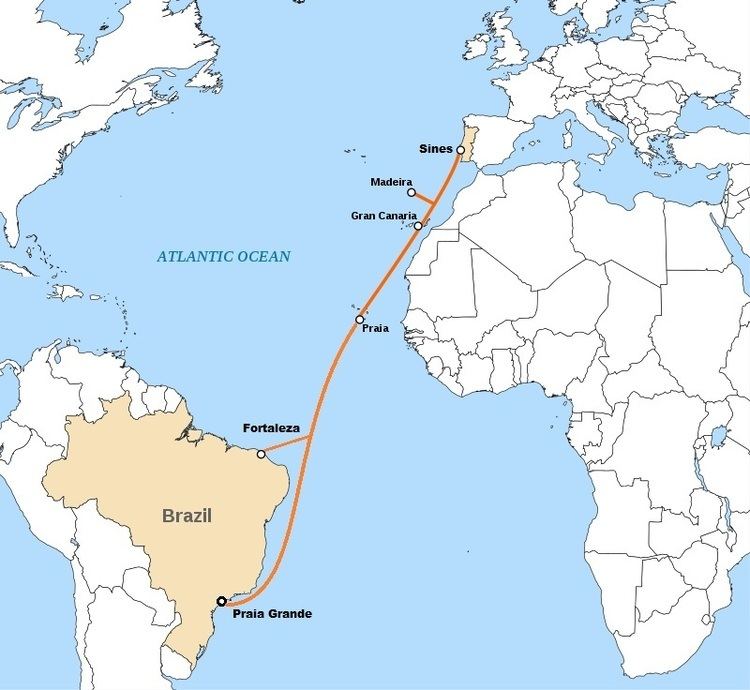Topology 4 × 2 fibers Date of first use 2018 | Technology repeatered DWDM | |
 | ||
Total length 9,400 km between Praia Grande (Brazil) and Sines (Portugal) + 730 km Branching unity to Fortaleza (Brazil) Design capacity 72Tb/s (4 Fiber Pairs x 120 Multiplexed channels x 150 Gbps per channel) Currently lit capacity 48Tb/s (4 Fiber Pairs x 120 Multiplexed channels x 100 Gbps per channel) | ||
EllaLink (formerly EulaLink) is a planned submarine cable linking Brazil and Portugal with en route landings at Cabo Verde, the Canary Islands and Madeira. It is expected to cost $185 million.
On 30 June 2015 a joint venture between Brazilian telecoms provider Telebras and Spain's IslaLink was signed off which will complete the communications link early 2018. 45 percent interest in the project will be held by IslaLink, 35 percent by Telebras while a further Brazilian shareholder will put up the remainder. The European Commission (EC) will invest around €25 million in the new fibre-optic infrastructure via the Building Europe Link to Latin America (BELLA) project, which was put forward by European research network DANTE and its Latin American counterpart RedCLARA.
EllaLink is planned to have landings at Cabo Verde and the Canary Islands where it can interconnect with other submarine cables running along the African east coast, in particular ACE and WACS. A further landing is considered at Madeira.
In June 2015 it was reported that Guyana's government is considering to tap into the EllaLink cable which will be debated in parliament in September 2015 before a formal bid must be supplied no later than end of 2015.
Currently the only other cable connecting Latin America directly to Europe is the Atlantis-2 cable laid in 2000, which has limited capacity, being almost exclusively used as a telephony link. The project is also driven by the aim to funnel Internet traffic between South America and Europe, bypassing the US entirely after reports suggested that the National Security Agency in the United States had been spying on Brazil's telecommunications. Brazilian President Dilma Rousseff said the EllaLink was central to "guarantee the neutrality" of the Internet, signaling her desire to shield Brazil's Internet traffic from U.S. surveillance.
The project is supported by Brazil and the EU who explained the cable will: "improve communications between the two continents, facilitate the take-up of broadband, stimulate ICT investments, reduce the interconnectivity costs for our businesses and researchers, enhance the protection of communications and provide better functional characteristics."
